The Institute’s Socrates Program headed south to Havana, Cuba this May. Participants explored the historical, cultural, economic, and political factors shaping modern Cuba, guided by academic readings and joined by distinguished Cuban leaders from various fields, diplomats, Cuban government officials, and local artists, giving participants a multifaceted perspective of a vivid and complex country. Herewith, a few of our favorite snapshots from the journey:
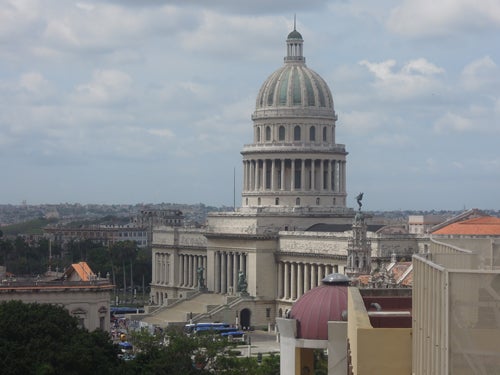
The Hotel Parque Central served as a home base for participants, both for seminar discussions and for shelter. A hub in Old Havana, the hotel is a few steps from Havana’s Grand Theatre, Museum of Fine Arts, and Museum of the Revolution. The roof deck affords guests expansive views of El Capitolio, the former seat of the Cuban government that is now home to the Academy of the Sciences of Cuba. (photo: Azalea Millan)
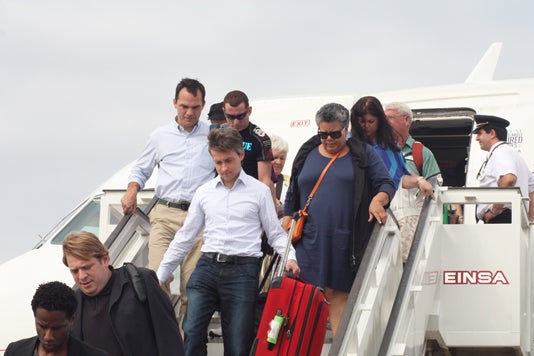
The descent into José Martí international airport in Havana showcased the vast fields and plantations of the island nation. The flight from Miami, which is only 90 miles from Cuba, took less than one hour, but with Havana’s historic architecture, aging infrastructure, and 1950’s-style cars, traveling to Havana was like a trip through time. (photo: Donna Horney)
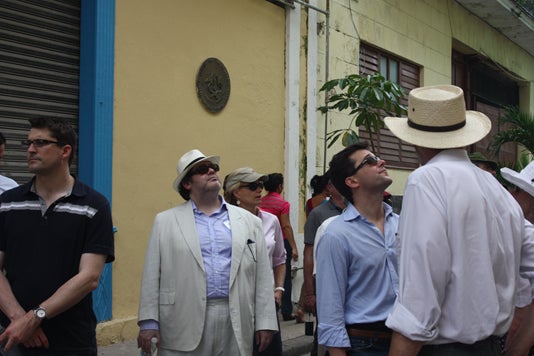
After a lecture on Cuban architecture at Hotel Parque Central, Cuban architect and historian Mario Coyula led a walking tour of Old Havana. Having arrived in Havana just a few hours earlier, participants were eager to see Old Havana, a UNESCO World Heritage Site, and its historic buildings. (Photo: Donna Horney)
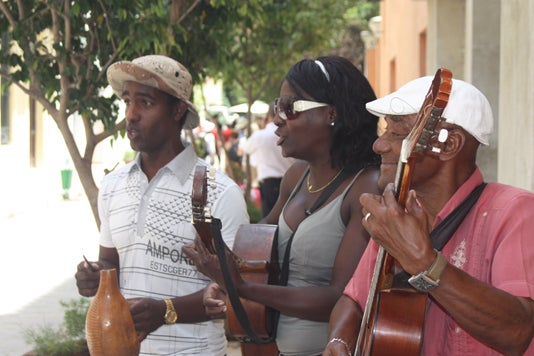
Sugar was Cuba’s main export until the late 20th century, when demand declined and tourism eclipsed it as the most vital sector of Cuba’s economy, resulting in an explosion of street performers. Musicians can be seen and heard everywhere in Havana, including restaurants and pubs, the hotel lobby, and city squares. (photo: Donna Horney)
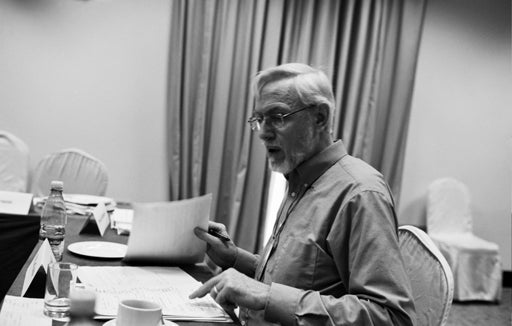
U.S. participants were joined at the table by several local Cuban academics and experts who provided key perspectives to the discussions in two concurrent Socrates seminars, “The Making of Modern Cuba.” The moderators were Dean of the American University School of Public Affairs William LeoGrande, pictured here, and Margaret Crahan of Columbia University. (Photo: Eric J Henderson)
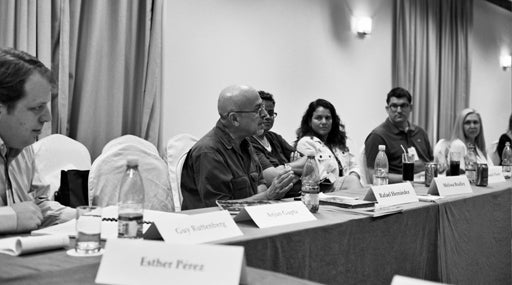
Rafael Hernández, editor of Temas magazine, participated in a seminar and discussed Cuba’s political past, present, and future, its role in international relations, and economic reforms such as privatization. (Photo: Eric J Henderson)
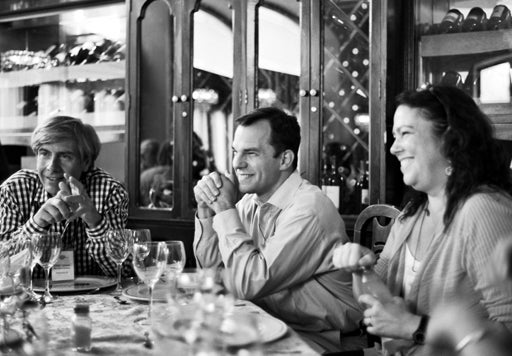
Institute Executive Vice President Elliot Gerson and participants Frank Williamson and Amy Herskovitz during lunch at the state-owned La Dominica restaurant in Old Havana, where a band performed traditional Cuban songs. (Photo: Eric J Henderson)
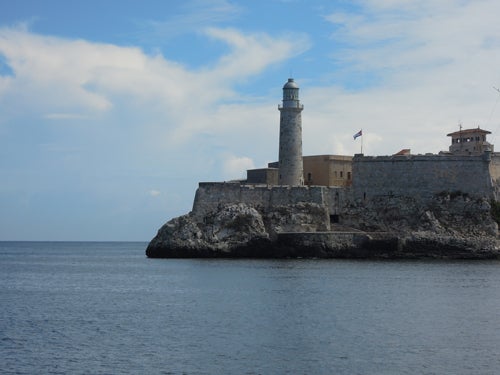
A stroll along the coast of Havana Bay afforded views of the fortress of La Cabaña. The fortress has played a central role in Cuban history, serving both as a military base and prison. (Photo: Azalea Millan)
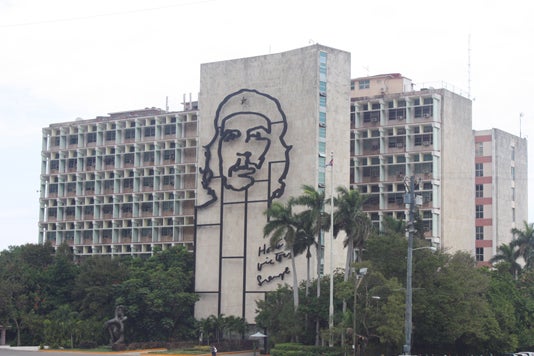
During the group’s visit, rain clouds gathered over the image of revolutionary Che Guevara on the Ministry of the Interior building at the Plaza de la Revolución, where Cubans gather for important events, including a mass by Pope Benedict XVI a few weeks before the Socrates trip. (Photo: Azalea Millan)
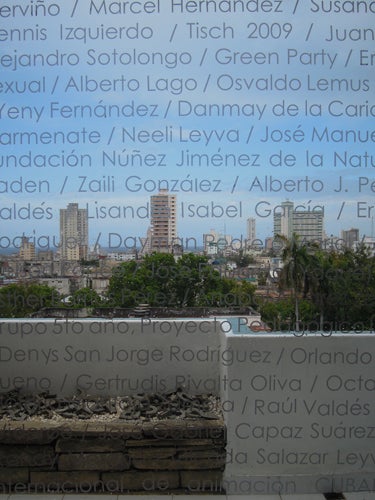
The next stop was the Ludwig Foundation of Cuba, an autonomous, non-governmental and non-profit institution that protects and promotes contemporary Cuban artists and culture and encourages dialog between Cuban and international cultural communities. The foundation is developing an online database of artists and their work, and has partnered with international organizations, including the Tisch School of the Arts at New York University, to foster dialogue and understanding through cultural exchange programs. (Photo: Azalea Millan)
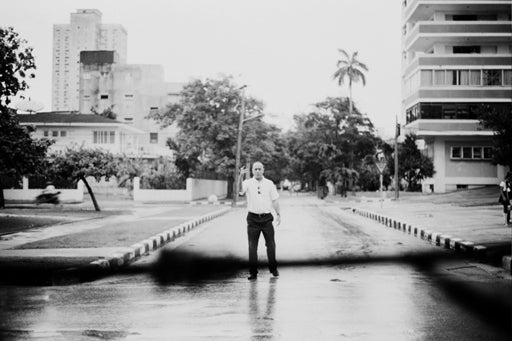
Participants navigated the streets of Havana by bus, and here the group’s tour guide helps navigate through the streets of the Vedado neighborhood of Havana. (Photo: Eric J Henderson)
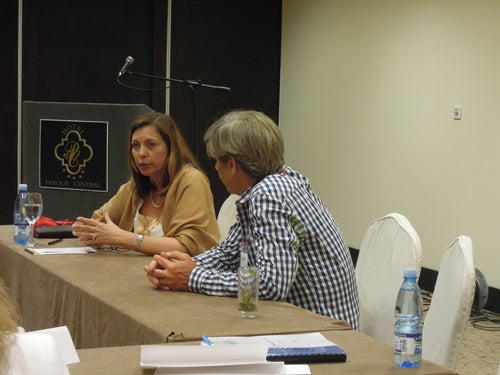
Institute Executive Vice President Elliot Gerson interviewed Josefina Vidal, head of the North American division at the Cuban Ministry of Foreign Affairs. Vidal discussed Cuba’s foreign policy, US-Cuba relations, and proposals from Cuban government officials to their US counterparts. Vidal, who had just returned from Washington, answered questions from Socrates participants. (Photo: Azalea Millan)
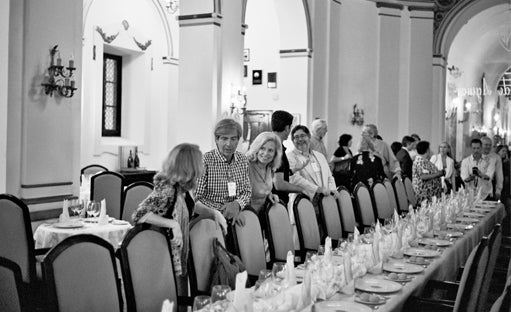
Dinner in the historic Hotel Nacional, which has hosted everyone from Winston Churchill to Marlon Brando. (Photo: Eric J Henderson)
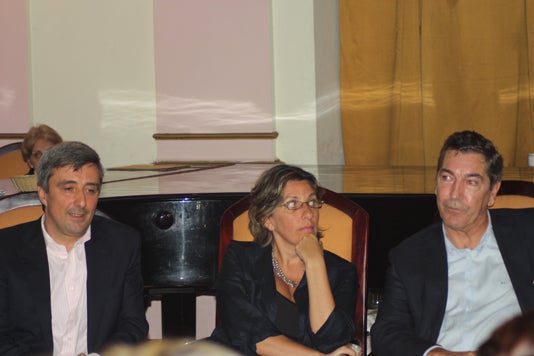
A panel of distinguished guests: EU Ambassador to Cuba Javier Niño-Pérez; UNDP Country Director Bárbara Pesce-Monteiro; and Spanish Ambassador to Cuba Manuel Cacho Quesada at the Hotel Nacional. The panel educated participants on contemporary Cuban public policy issues, including maintaining universal health care and education and the importance of growing the small and medium enterprise sector. (Photo: Donna Horney)
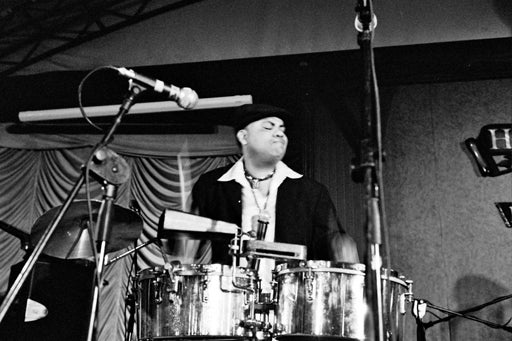
After dinner, the group was treated to a performance by the acclaimed Buena Vista Social Club at the Hotel Nacional. Patrons looking to learn a few salsa, rumba, and tango moves joined the professional dancers on the dance floor. (Photo: Eric J Henderson)
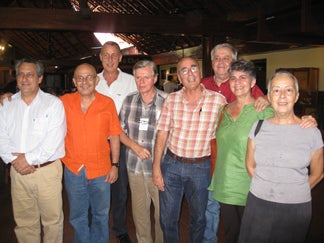
University of Havana professor Jorge Mario Sanchez, TEMAS magazine Editor Rafael Hernández, Center for the Studies of Cuban Economy professor Juan Triana, architect, historian, and professor Mario Coyula; Union of Writers and Artists member and economic historian Oscar Zanetti, diplomat and University of Havana professor Carlos Alzugaray, University of Havana sociologist Marta Nuñez, and director of the Martin Luther King, Jr. Memorial Centre in Havana Esether Perez joined the Socrates seminars during lunch at El Aljibe, a restaurant in the Miramar district. (photo: Melissa Ingber)
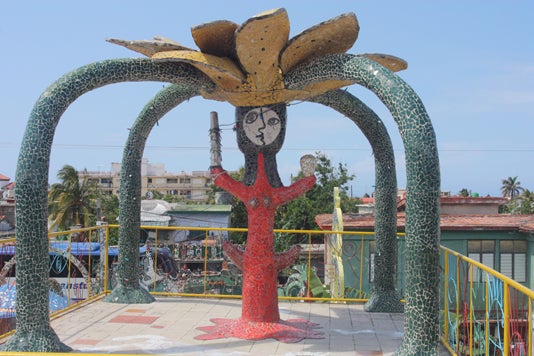
The group visited “Fusterlandia,” home of ceramicist Jose Fuster, who lives in Jaimanitas, just outside of Havana. As part of a community development initiative, Fuster has decorated many homes in Jaimanitas with his murals and paintings. (photo: Donna Horney)
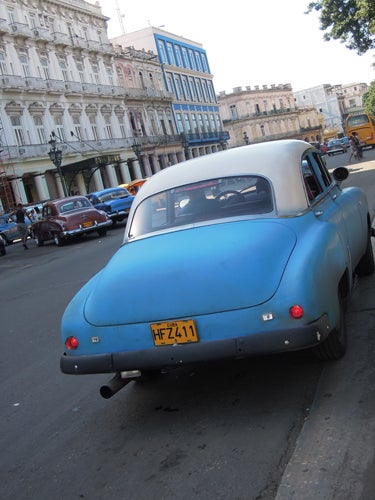
In addition to old American cars and bicycle taxis, pedestrians share the road and cobblestone streets with horse-drawn carriages. Throughout the day, Havana is bustling with activity, from 50-year-old cars to children playing on the sidewalks. (Photo: Eric J Henderson)
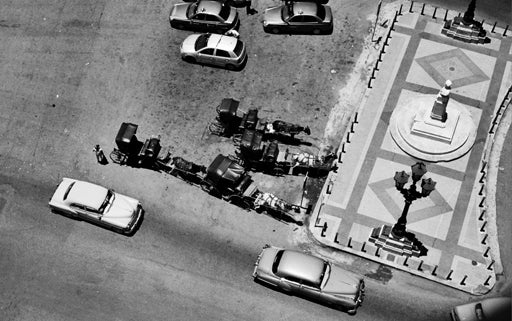
Since the US embargo of Cuba in the 1960s, many Cubans have kept their American cars in working condition through resourceful replacement of broken parts with other materials. (Photo:
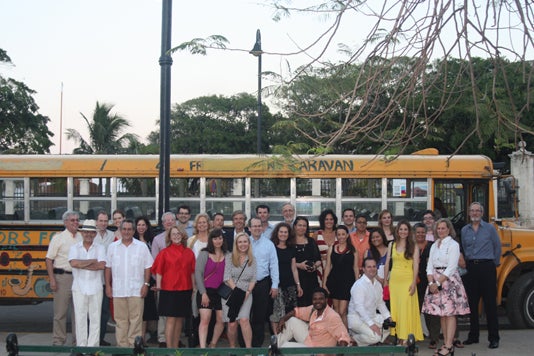
The group rode a “Friendshipment Caravan” to the closing dinner in Old Havana. The school bus was donated to Cuba as part of the Pastors for Peace initiative to improve Cuba-US relations. In addition to school buses, Pastors for Peace regularly ships construction tools, medical supplies, and other forms of aid to Cuba. (photo: Donna Horney)
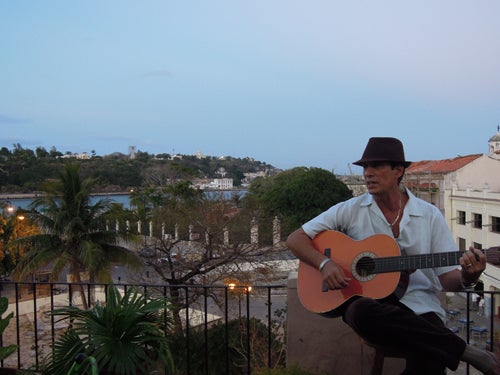
A musician serenades Socrates at the closing dinner at the paladar La Moneda Cubana, where the group sat on terrace seating with a view of the Havana Bay. Paladares are privately-owned restaurants (instead of state-owned) whose prevalence is a result of Cuba’s economic reforms of the 1990s. Every evening at 9pm, a canon at La Cabaña fires to symbolize the closing of the city walls. (Photo: Azalea Millan)

